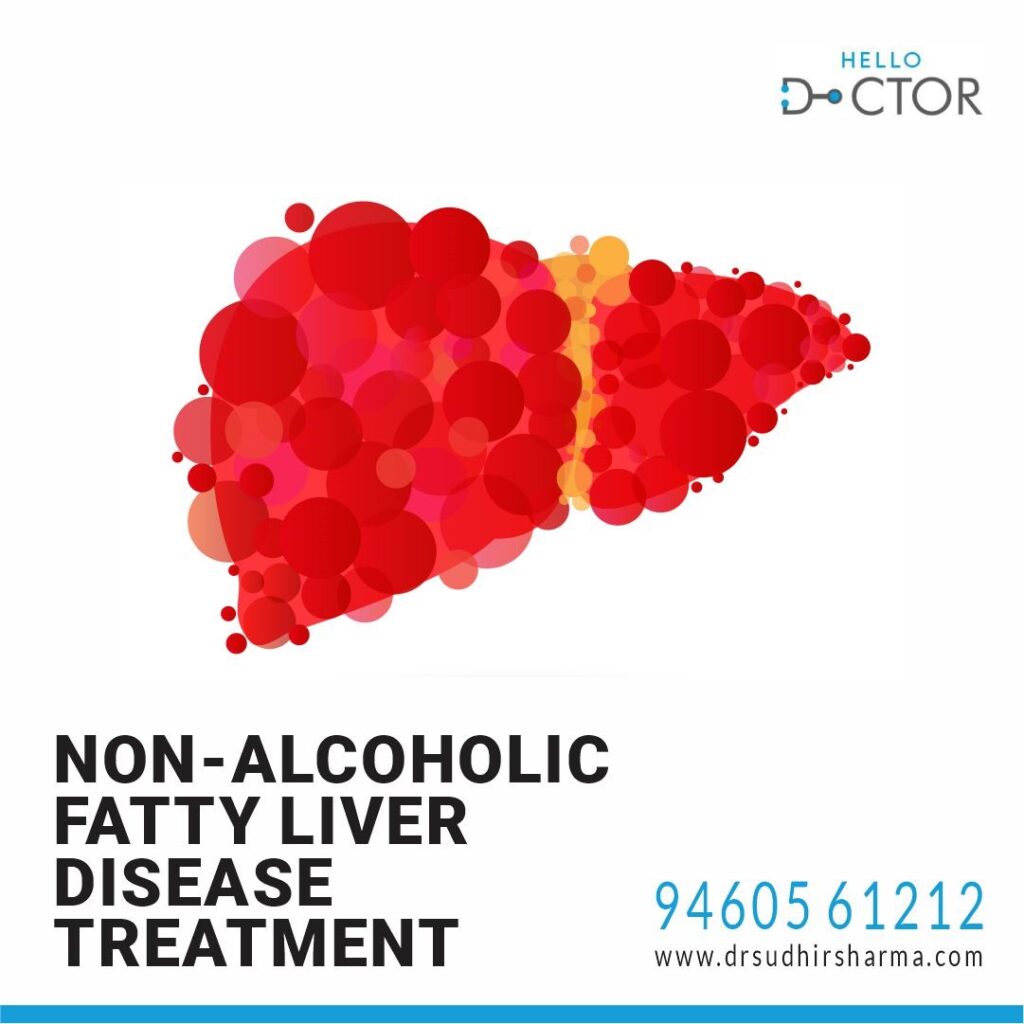Non-Alcoholic Fatty Liver Disease (NAFLD) is one of the most common liver disorders worldwide, affecting individuals who consume little to no alcohol. This condition occurs when excess fat builds up in the liver, potentially leading to inflammation and liver damage if left untreated. While the condition is concerning, the good news is that lifestyle changes, medical interventions, and proper guidance can help manage and even reverse NAFLD.

What Is NAFLD?
NAFLD is a spectrum of liver conditions caused by fat accumulation in liver cells. It ranges from simple fatty liver (steatosis), which is relatively benign, to non-alcoholic steatohepatitis (NASH), which involves inflammation and can progress to cirrhosis or liver cancer.
Common Symptoms of NAFLD
In its early stages, NAFLD often has no symptoms. As the condition progresses, individuals may experience:
- Fatigue
- Discomfort in the upper right abdomen
- Unexplained weight loss
- Weakness
- Yellowing of the skin and eyes (in severe cases)
Risk Factors for NAFLD
- Obesity or being overweight
- Type 2 diabetes or insulin resistance
- High cholesterol or triglycerides
- Metabolic syndrome
- Sedentary lifestyle
- Poor dietary habits
How to Treat NAFLD: Step-by-Step Approach
1. Adopt a Healthy Diet
A liver-friendly diet is crucial for managing NAFLD.
- Focus on Whole Foods: Include plenty of fruits, vegetables, whole grains, and lean proteins.
- Healthy Fats: Opt for omega-3-rich foods like salmon, walnuts, and flaxseeds.
- Limit Sugar and Refined Carbs: Avoid sugary drinks, pastries, and processed foods.
- Cut Down on Saturated Fats: Reduce consumption of fried foods, red meat, and full-fat dairy.
2. Maintain a Healthy Weight
Weight loss is one of the most effective ways to reduce liver fat.
- Aim for gradual weight loss (1–2 pounds per week).
- Combine a balanced diet with regular exercise for sustainable results.
3. Regular Physical Activity
Exercise helps reduce liver fat and improve insulin sensitivity.
- Engage in at least 150 minutes of moderate-intensity exercise per week, such as walking, cycling, or swimming.
- Include resistance training exercises twice a week to build muscle strength.
4. Manage Blood Sugar and Cholesterol
High blood sugar and cholesterol levels can exacerbate NAFLD.
- Monitor your blood sugar levels regularly if you have diabetes.
- Follow a heart-healthy diet and take prescribed medications to manage cholesterol.
5. Avoid Alcohol and Liver Stressors
While NAFLD is not caused by alcohol, avoiding alcohol can help prevent additional liver strain.
6. Take Prescribed Medications
There is currently no specific medication approved for NAFLD, but your doctor may recommend:
- Vitamin E or antioxidants to reduce inflammation.
- Diabetes medications like pioglitazone or metformin, if applicable.
- Medications to manage underlying conditions like high cholesterol or high blood pressure.
7. Monitor Progress Through Medical Check-Ups
Regular check-ups and imaging tests, like ultrasounds, can help monitor liver health and progression.
Natural Remedies and Supplements
- Milk Thistle: Known for its liver-protective properties.
- Turmeric: Contains curcumin, which has anti-inflammatory effects.
- Green Tea: May reduce liver fat due to its antioxidant content.
Preventing NAFLD
Prevention is always better than cure.
- Maintain a balanced diet and active lifestyle.
- Avoid overeating and manage portion sizes.
- Stay hydrated and reduce stress through activities like yoga or meditation.
When to See a Doctor
If you experience symptoms like persistent fatigue, unexplained weight loss, or abdominal pain, consult a doctor immediately. Early diagnosis and management can prevent complications.
Conclusion
Treating NAFLD involves a combination of lifestyle changes, medical interventions, and regular monitoring. With commitment and the right guidance, managing or reversing NAFLD is achievable.
If you or someone you know is struggling with NAFLD, Dr. Sudhir Sharma is here to help. Schedule a consultation today to receive personalized advice and treatment tailored to your needs.

